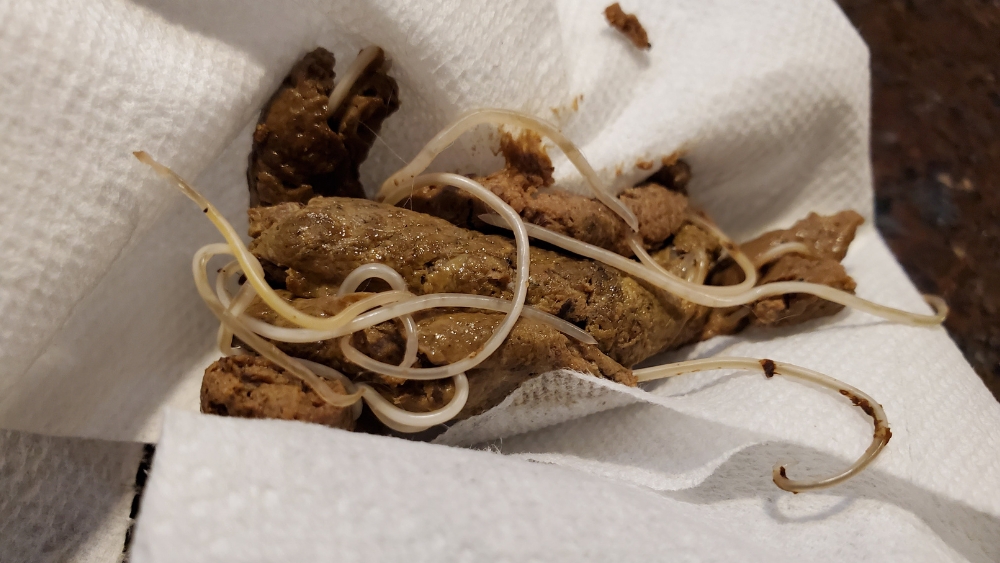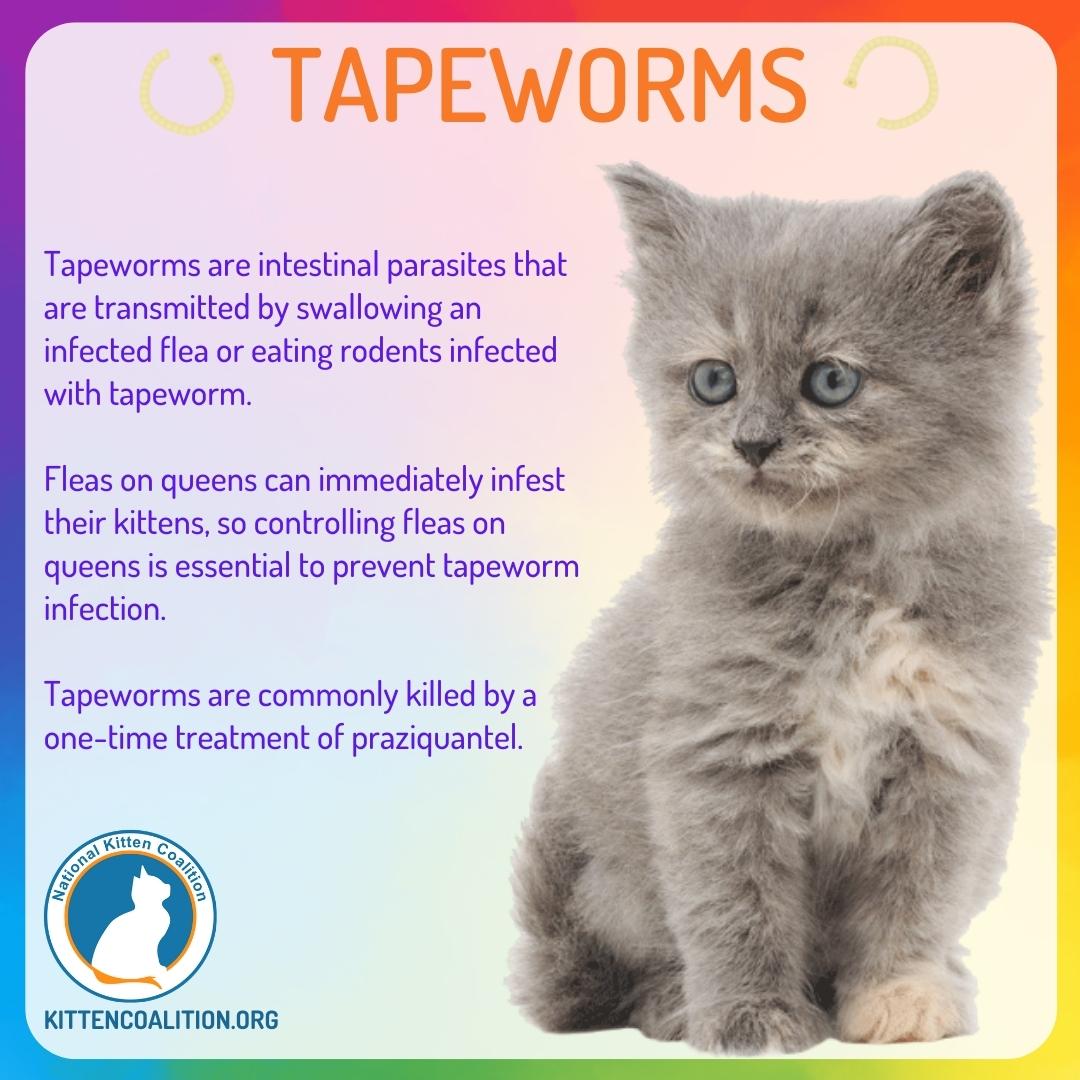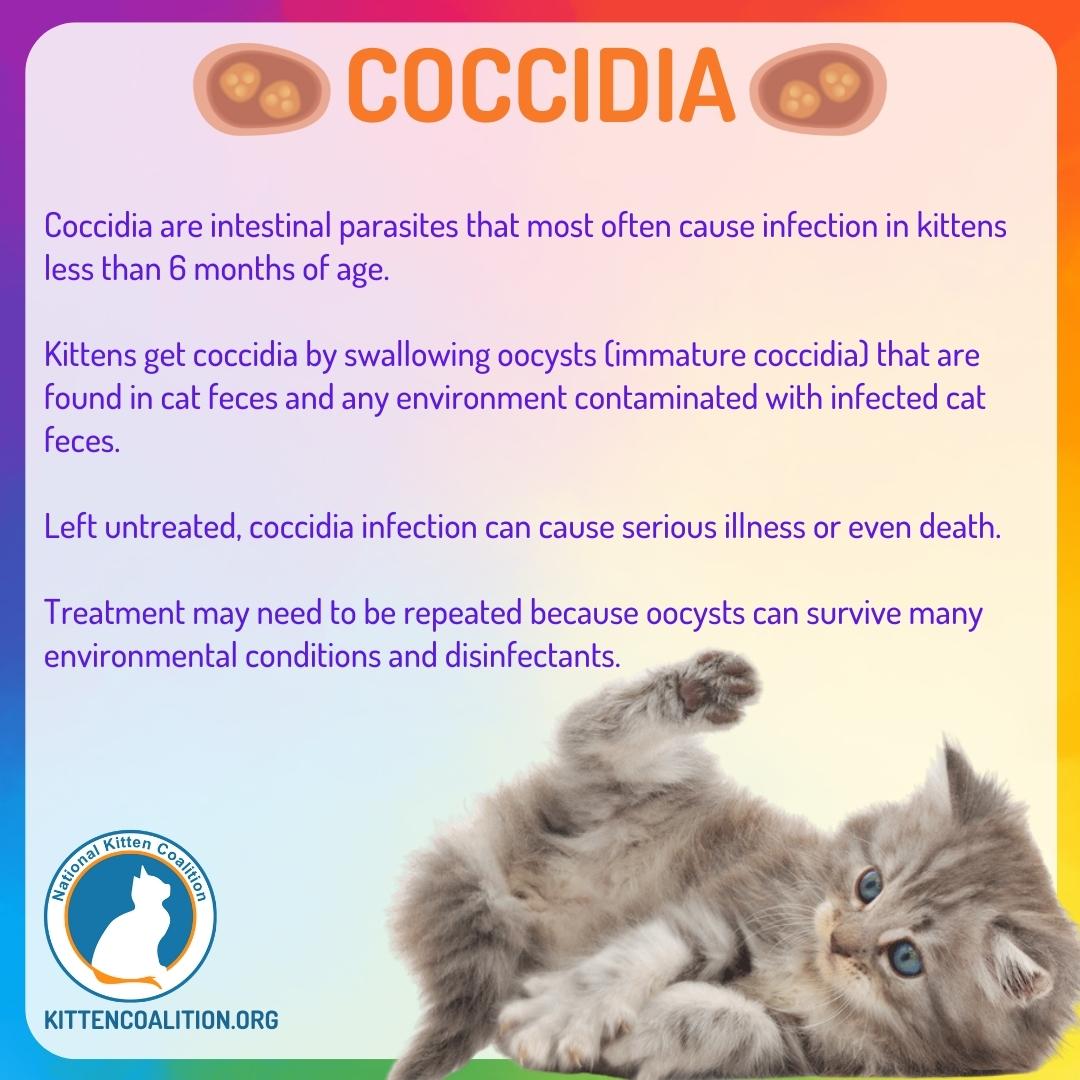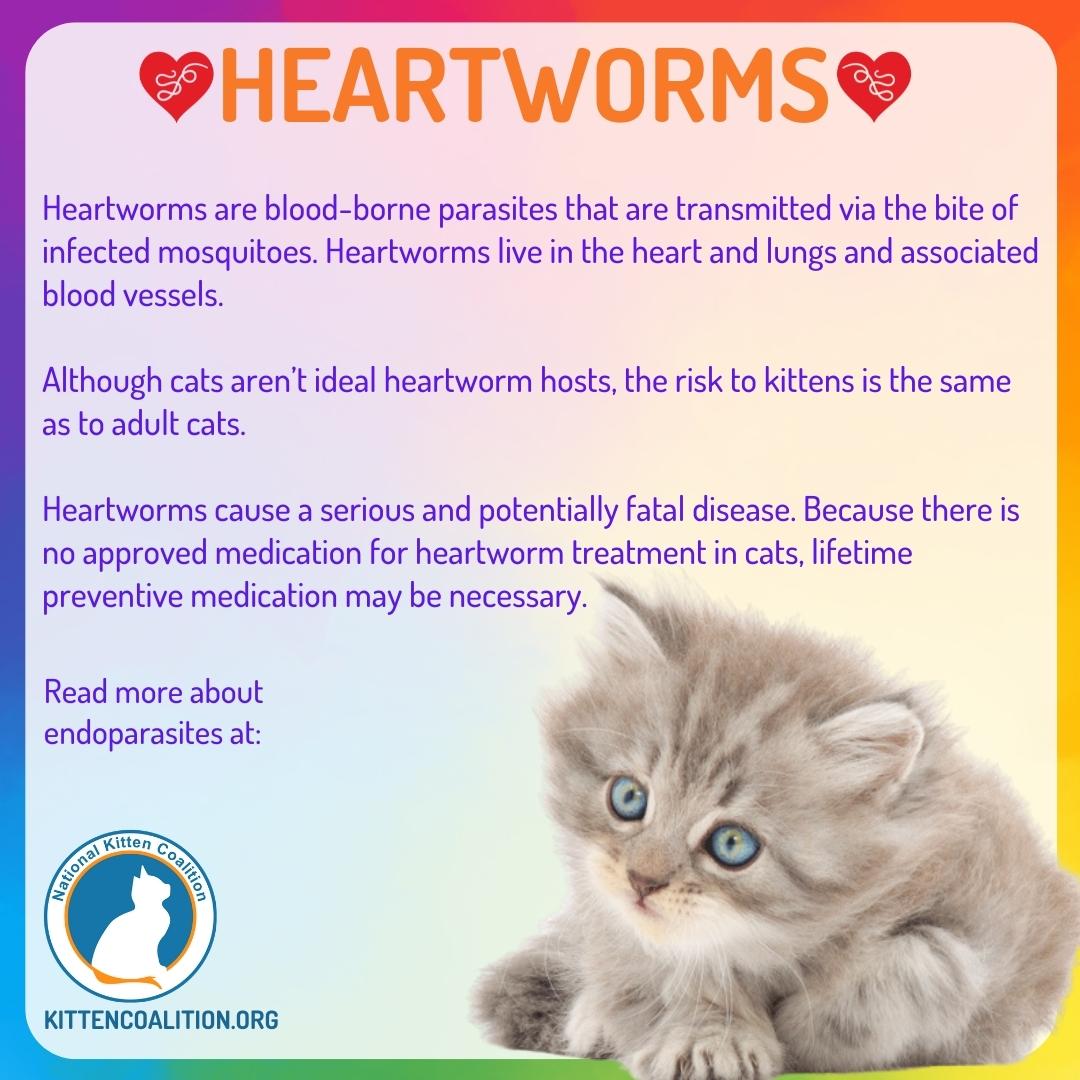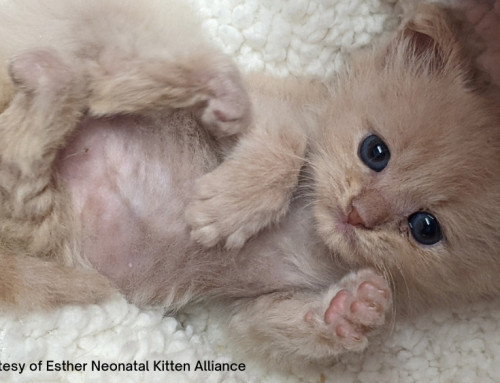Share this resource or email it to a friend!
A parasite is an organism that lives in a host organism and gets its food from or at the expense of its host. Endoparasites are those that live in the tissues and organs of their host.
The most common endoparasites that live in the intestines of kittens include roundworms, hookworms and tapeworms. Coccidia are microscopic, one-celled organisms called protozoa that live within the cells lining the intestines.
Intestinal parasites typically cause nonspecific symptoms, including diarrhea, mucousy or bloody feces, vomiting, loss of appetite, coughing, pale mucous membranes, a potbellied appearance or a dull coat. Vomiting and diarrhea, which can lead to anemia and dehydration, are especially serious in young kittens who then become more susceptible to viral and bacterial infections and other diseases.
Roundworms and Hookworms
Roundworms and hookworms can be transferred via the placenta or queen’s milk to kittens. They can also be transmitted by ingesting infected feces and/or grooming fur contaminated with infected feces. These parasites can affect cats of all ages, but they are most commonly found in kittens and cats who live or go outdoors and come into contact with infected feces.
Because these parasites attach to the intestinal walls and drain blood and nutrients, roundworms and hookworms can cause mild to extreme illness and, in some cases, even death from anemia, dehydration or malnutrition.
To prevent an overwhelming infection, kittens should be dewormed starting at 2 weeks of age (or immediately upon arrival to a shelter, rescue, or home) and every 2 weeks until they are 20 weeks old. Adult cats are at less risk of serious illness, but it’s still recommended that they be dewormed monthly if they spend time outdoors, typically with a topical combination product that also treats fleas.
Tapeworms
Tapeworms are parasites that are made up of segments, which may look like a grain of rice, if fresh, or a sesame seed, if dried, on a kitten’s rear end. The most common tapeworm in cats in North America is transmitted when a cat swallows an infected flea, whether or not the cat is flea-infested.
Queens transmit fleas immediately to their kittens, so flea control is essential to prevent tapeworm infection. Cats who go outdoors can also acquire tapeworms through eating infected rodents. Tapeworms are most often killed by a one-time treatment of praziquantel, which can be administered by a veterinarian.
Coccidia
Coccidia cause infection, most often in kittens less than six months of age. They don’t have any immunity to coccidia, which can reproduce rapidly and may cause significant disease Coccidia can also cause infections in adult cats with weakened immune systems.
In kittens, coccidia infection can cause severe watery or mucous diarrhea, dehydration, abdominal discomfort, loss of appetite and vomiting. Left untreated, coccidia infection in kittens can cause serious illness or even death.
Coccidia infection is diagnosed by microscopic examination of a stool sample to look for coccidian oocysts (the stage of the life cycle that is shed in the feces). There are many medications to treat coccidia infection. Treatment may need to be repeated because oocysts can survive many environmental conditions and disinfectants, which causes frequent reinfection in kittens.
Heartworms
Heartworms do not live in the intestines. As their name indicates, heartworms are a blood-borne parasite that live in the heart, lungs and associated blood vessels. Heartworms cause severe lung disease, heart failure and damage to other organs in the body. Heartworm infection is a serious and potentially fatal disease.
Heartworm disease mainly affects dogs but can affect cats and ferrets as well. Heartworms also live in wild species, including wolves, coyotes, foxes and sea lions. Because foxes and coyotes live in proximity to many urban areas, they are considered important carriers of heartworm disease.
Heartworms are transmitted via the bite of infected mosquitoes; therefore all dogs and cats are at risk of getting heartworms. The risk to puppies and kittens is the same as to adult dogs and cats.
Cats are not ideal hosts for heartworms, and, although some infections resolve on their own, they may affect the immune and respiratory systems, causing coughing, wheezing and difficulty breathing. Heartworms may even migrate to the brain, eye and spinal cord. Severe complications such as blood clots in the lungs and lung inflammation can result when the adult worms die in the cat’s body.
There are no approved medications to treat heartworm infection in cats. They will require a long-term management plan, which may include small steroid doses to help reduce inflammation, chest x-rays every 6 to 12 months and heartworm preventive medication to avoid reinfection.
Because there is no approved medication, the American Heartworm Society recommends that kittens be started on a heartworm preventive as early as the product label allows, and no later than 8 weeks of age, and be given every 30 days for life. Heartworm prevention is available in a topical product that also prevents fleas and other parasites.
Zoonotic Considerations
A zoonotic disease is one that can spread from animals to people.
People may become infected with roundworms by accidentally ingesting soil, sand or plants contaminated with infected animal feces. People may become infected with hookworms by sitting or walking on contaminated soil or sand with bare feet, and the larvae penetrate the skin. Roundworms and hookworms pose a threat, in particular, to young children and immunocompromised individuals.
People can get tapeworms by accidentally swallowing a flea infected with tapeworm larvae; most reported cases involve children. Tapeworm infection is easily treated in people.
Preventive deworming of personal pets and foster kittens will protect them, as well as human family members, from intestinal parasites. Proper disposal of cat feces and personal hygiene are important to minimize the risk of transmission of all feline parasites to people.

